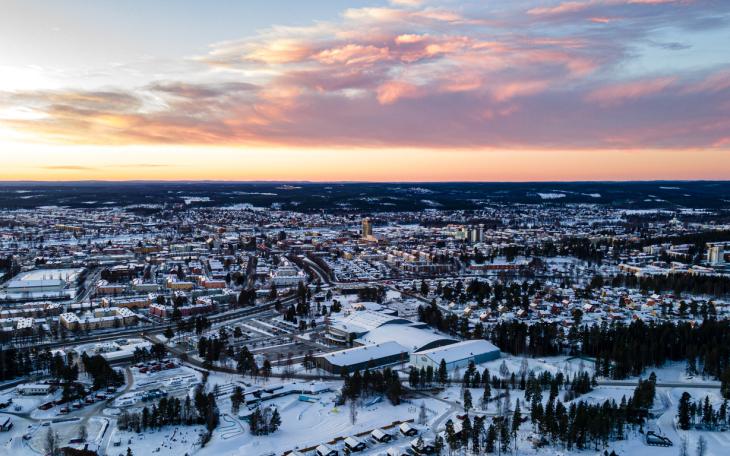Lapland goes green, but at what cost?

For those who haven't heard of Skellefteå (pronounced sche-LEFT-eh-o), the small city sits in the far north of Sweden, on the coast of the Baltic sea. I was lucky enough to spend my school holidays there when visiting my dad who lived in one of the city’s neighbouring villages. Yes, it was as Swedish as it sounds - my time there was spent snowmobiling, ice fishing and cross-country skiing whilst the northern lights danced overhead, and summers were spent blueberry and mushroom picking, or swimming at the various beaches that stretch the country.
It was a sleepy place, home to a close-knit community that stays close to nature with a city that historically had very little to offer in the way of malls, restaurants, and bars. However, when I travelled back in September to visit family after 10 years away, I was met with a very different city, one that I was told, was now at the forefront of a $100 billion green tech boom.
In 2016, Skelleftea hatched a plan to invest 20 billion kronor in municipal services over a five-year period. Just a year later, Northvolt, a rapidly growing green battery maker founded by a former Tesla executive and backed by Volkswagen AG, picked the city as the spot for its new headquarters, Northvolt Gigafactory, which will eventually produce enough batteries to power about one million electric vehicles a year.
Today, arounds 1,500 Northvolt employees work at the factory complex, reportedly adding somewhere around 100 employees up in Skelleftea per month, drawn from about 80 different nations, from the battery, oil and gas, pharmaceutical, paper and chemical industries.
It’s now thought that Skelleftea is the fastest growing municipality in Sweden, expected to grow from its current 35,000 population to 100,000 by 2040. Because of this, the area is experiencing a breadth of urban rejuvenation, with new restaurants, coffee shops, residential developments and an English-speaking school to accommodate its growing expat population. An exciting prospect.
Though proud of the city for now being on the front line of global green transition and excited for the new city to take shape, there is nervousness among those that have lived in the area for generations. Over the various Fika’s I had with family and friends, it was discussed in detail, with lots of conflicting opinions.
Most pressing was the topic of the housing market. They highlighted how demand for homes in the area had shot up and in 2020-2021, house prices increased at a record pace by 29 percent. Though this year has cooled somewhat due to a Sweden’s wider house market distress, Skelleftea has by in large escaped the worst of this crash and locals are concerned of being priced out of the municipality.
However, after decades of a falling population due to diminishing employment opportunities and youngsters escaping to more lively cities, personally, I am optimistic. Though the housing market is tight now, there has been a spate of new residential developments launched, with many of them set to complete in coming years.
With this new factory, unemployment is non-existent in the area, new transport links will open up, enhanced social infrastructure is already being seen.
It’s not the sleepy town I once grew up in, but the future’s bright, and also - green.








